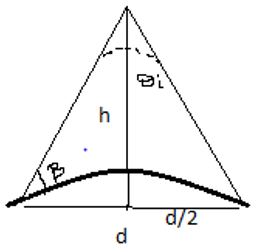This set of Antennas Multiple Choice Questions & Answers (MCQs) focuses on “Multi Hop Propagation”.
1. The propagation of wave from transmitter to receiver without touching the ground is called as ___
a) Single hop distance
b) Virtual height
c) Actual height
d) Multi-hop
View Answer
Explanation: If wave travels from the transmitter to receiver without touching the ground is called the single hop distance. If it touches the ground in between, then it is called multi hop propagation.
2. The propagation of wave from transmitter to receiver by touching ground in between them and goes through different layers is called _____
a) Multi-hop single layer
b) Single hop multi layer
c) Multi hop multi layer
d) Single hop single layer
View Answer
Explanation: Multi hopping means the wave touches the ground once or more than once while travelling from transmitter to receiver. If it propagates through the multiple layers then it is called multi-hop multi layer. In single hopping the wave doesn’t touches the ground.
3. The take-off angle for the curved earth surface is given by ____
a) β = 90 – θi – 57.3d/2R
b) β = 180 – θi
c) β = 180 – θi – 57.3d/2R
d) β = 90 – θi
View Answer
Explanation: The take-off angle for the curved earth surface is β = 90 – θi – 57.3d/2R
Take-off angle for the flat earth surface is β = 90 – θi

4. Calculate the skip distance for the flat earth when a wave is reflected in an ionosphere at a height of 100km at a take-off angle 10°.
a) 172km
b) 35.26km
c) 17.25km
d) 35.26m
View Answer
Explanation: Take-off angle for the flat earth surface is β = 90 – θi
θi=90-β=90-10=80
skip distance \(d=2h\sqrt{[(secθ_i)^2-1]}=2h\sqrt{[(sec10)^2-1]}=35.26km \)
5. Find the take-off angle for the flat earth surface with θi = 75.
a) 15
b) 30
c) 105
d) 75
View Answer
Explanation: Take-off angle for the flat earth surface is β = 90 – θi = 90 – 75 = 15
6. Which of the following propagation is used when the receiver is beyond the skip distance?
a) Single hop
b) Single hop multi layer
c) Multi hop
d) Ground wave
View Answer
Explanation: When the receiver is beyond the skip distance, single hop is prevented from reaching the receiver. It requires more than one hop to travel to the desired receiver. So Multi Hop propagation with single or multi layer is used.
7. The Upper ray is stronger than the lower ray and is mostly preferred for communication.
a) True
b) False
View Answer
Explanation: The Upper ray is weaker than the lower ray in terms of energy contents and it spreads more in the electron density region compared to the lower ray. So the lower ray is mostly preferred for communication.
Sanfoundry Global Education & Learning Series – Antennas.
To practice all areas of Antennas, here is complete set of 1000+ Multiple Choice Questions and Answers .
If you find a mistake in question / option / answer, kindly take a screenshot and email to [email protected]
